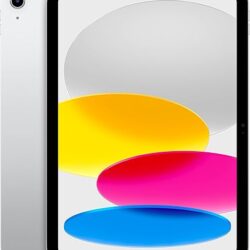四、使用形容词时需要注意的几个问题
Points that merit special attention
(一)形容词做定语和结构助词“的(de)”
The attributive use of adjectives and the structural particle的(de)
定语一定要放在中心语前边。
The attributive must precede the word it modifies.
1.单音形容词可以直接修饰中心语。例如:
A monosyllabic adjective can modify directly. For example:
| 单音形容词,定语 | 名词,中心语 |
| 新 | 书 |
| 白 | 衬衫 |
| 凉 | 开水 |
如要强调修饰性,可以在单音形容词和中心语之间用助词“的”。例如:
When stressing the modification, can be used between the monosyllabic adjective and the modified word. For example:
 亚马逊导购/好书推荐
亚马逊导购/好书推荐  读新闻学外语
读新闻学外语  卑诗省当天新盘
卑诗省当天新盘
| 单音形容词 定语+“的” | 名词,中心语 |
| 新的 | 书 |
| 白的 | 衬衫 |
| 凉的 | 开水 |
2.双音形容词修饰单音名词,要用助词“的”。例如:
When a dissyllabic adjective is used to modify a monosyllabic noun, 的 must be placed between them. For example :
| 双音形容词 定语+“的” | 名词,中心语 |
| 好看的 | 画 |
| 重要的 | 事 |
| 温馨的 | 家 |
双音形容词修饰双音名词,用不用助词“的”都可以。例如:
If both the adjective and the modified noun are dissyllabic, Kj is optional. For example:
| 双音形容词 定语+(“的”) | 双音名词中心语 |
| 可靠(的) | 伴侣 |
| 幸福(的) | 老人 |
| 新颖(的) | 式样 |
- 形容词重叠后做定语,要用“的”。例如:
When the attributive is a reduplicated adjective, is used. For example :
小华红红的脸、大大的眼睛真可爱。
孩子们在暖暖和和的房子里做功课。
(二)形容词做状语和结构助词“地(de)”
The adverbial use of adjectives and the structural particle地(de)
状语一定要放在中心语前边。
The adverbial adjunct must be put before the word it modifies.
1.单音形容词做状语可以直接修饰中心语。常见的有:
A monosyllabic adjective used as an adverbial adjunct can directly precede the modified word. Following are the common monosyllabic adjectives:
| 单音形容词,状语 | 动词,中心语 |
| 快 | 走 |
| 多 | 说 |
| 晚 | 到 |
- 双音形容词做状语,用不用助词“地”都可以。要强调修饰性时,常用“地”。例如:
When the adverbial adjunct is a dissyllabic adjective, is optional. But when modification is stressed, is usually used. For example:
| 双音形容词 状语(+“地”) | 动词,中心语 |
| 热情(地) | 欢迎 |
| 努力(地) | 钻研 |
| 勇敢(地) | 面对 |
3.兼属动词的形容词做状语,一定要用助词“地”。例如:
E must be used after the adverbial modifier composed of an adjective which is converted from a verb. For example:
他清楚地回答了我们的问题。
大家高兴地唱起歌来。
4. 双音形容词重叠后做状语,一般都要用助词“地”。例如:
地 must be used after an adverbial modifier which is the reduplication of a dissyllabic adjective. For example:
她们高高兴兴地谈着。
他每天都在紧紧张张地工作。
单音形容词重叠后做状语,用不用助词“地”都可以。例如:
However, is optional when the adverbial adjunct is the reduplication of a monosyllabic adjective. For example:
母亲紧紧(地)抱着自己的孩子。
天气慢慢(地)暖和了。
他们早早(地)出发了。
(三)关于形容词重叠
Reduplication of adjectives
- 重叠形式
Formulas of reduplication
(1)单音形容词的重叠形式是:AA。例如:
The reduplicative formula for monosyllabic adjectives is AA. For example:
大一大大
红一一红红
快一快快
一慢慢
(2) 双音形容词的重叠形式是:AABB。例如:
快一快快
慢一慢慢
The reduplicative formula for dissyllabic adjectives is AABB. For
example :
干净一千干净净
凉快-凉凉快快
痛快 痛痛快快
清楚一一清清楚楚
2.有的形容词兼属动词,少数做动词时可按动词的重叠形式重叠。例如:
Some adjectives can be converted into verbs, in which case they can be reduplicated in the formula for reduplicating verbs. For example:
今年农业丰收,大家应该高兴高兴。
休息的时候,在大树下边凉快凉快吧。
(四)汉语里形容词可以直接充当谓语,前边不用动词“是”。例如:
A is not used before an adjective which functions as the predicate. For example:
他高。(不说“他是高”)
形容词做谓语时,前边常用副词“很”,但表示程度的成分很弱。这时“很”轻读;如果重读就是强调了。例如:
When an adjective functions as the predicate, a weakened adverb of degree 很 is of used. In such a case, 很 is pronounced in neutral tone.
If it is stressed, expresses emphasis. For example:
他很高。
有些形容词重叠后可以做谓语,后边必须用助词“的”。例如:
Some reduplicated adjectives can act as the predicate and the particle I must be used after them. For example:
他的脸红红的。
屋子里暖暖和和的。
(五)形容词做主语常表示被判断的对象,谓语多由形容词或, 表示判断的动词充当。例如:
The adjective serving as the subject in a sentence is often the object of a judgement expressed by the predicate which is generally composed of an adjective or a linking verb. For example:
勤劳很重要。
骄傲是不好的。
(六)形容词不能带宾语,但少数形容词兼属动词可以带宾语。这种兼类词带宾语时含有“使”的意思。例如:
Adjectives can not take objects except for a few of them when they are converted into verbs with the meaning ( to make). For example:
| 形、动兼类词 Adjectives and their verbal conversions | 形容词用法 Used as adjective | 动词用法 Used as verb |
| 丰富 | 内容丰富 | 丰富內容 |
| 严格 | 纪律严格 | 严格纪律 |
| 壮大 | 队伍壮大 | 壮大队伍 |
| 繁荣 | 经济繁荣 | 繁荣经济 |
| 密切 | 关系密切 | 密切关系 |
又如:
Here are two more examples:
这篇文章的內容很丰富。
再丰富一下內容,这篇文章就更好了。
(七)形容词“多”和“少”
The adjectives 多and少
“多、少”做定语修饰名词时,前边必须用“很”和“不”构成“很多”和“不少”,后边一般不用助词“的”。例如:
多 and少 must be combined with 很 or 不 to serve as attributives modifying nouns, and it is not necessary to use 的 after 很多 and 不少. For example:
公园里有很多人。x公园里有多人。
很多城市都有这种设备。 x多城市都有这种设备。
不少同学买了这种书包。x少同学买了这种书包。
今天我解决了不少问题。x今天我解决了少问题。
这里的“很”并不强调程度高。
Here R does not express a high degree.
(八)形容词“男、女、正、副、公共、共同”等一般不能做谓语,只能做定语。例如:
Adjectives such as 男,女,正,副,公共,共同, etc. ,generally can only function as attributive, but not predicate. For example:
男孩子 女孩子 正经理 副经理
公共汽车 共同愿望
又如:
Here is another example:
张先生有一个男孩子和一个女孩子。
“公、母、雌、雄”一般用来形容动植物。例如:
The adjectives A, #, H and are normally used with animals and plants. For example:
公鸡 cock
母兔female rabbit (doe)
雌花 pistillate flower
雄蕊 androecium
这类形容词后边不带名词时,就要用助词“的”。例如:
When the noun is absent, the particle must be used after this kind of adjectives. For example:
男的
整的
正义的
唯一的
又如:
Here is another example:
那个班有九名学生,五名是男的,四名是女的。
只有在填各种表格时,可以单独说“男”或“女”
Only when filling forms, people use “男” or “女” separately.








